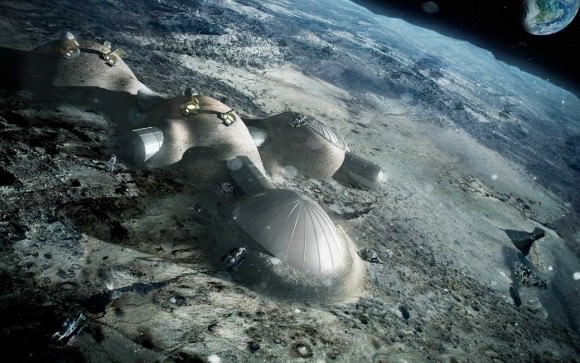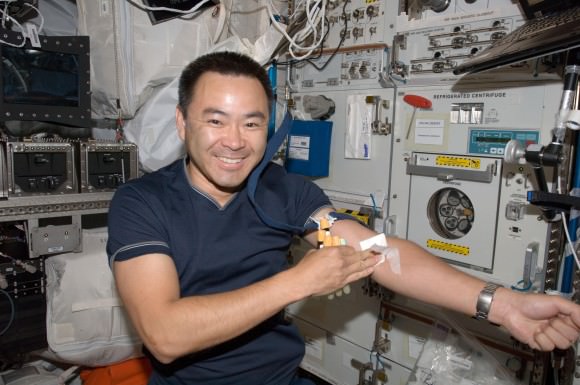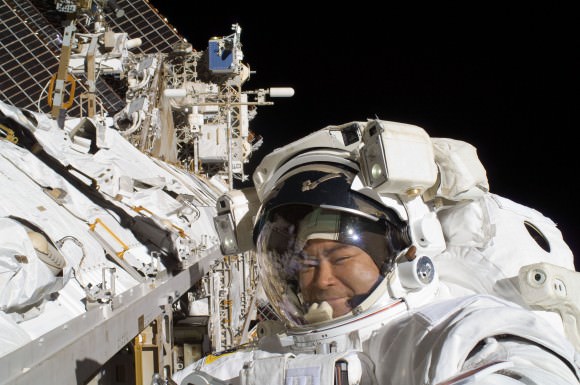It’s been over forty years since the Apollo Program wrapped up and the last crewed mission to the Moon took place. But in the coming years and decades, multiple space agencies plan to conduct crewed missions to the lunar surface. These includes NASA’s desire to return to the Moon, the ESA’s proposal to create an international Moon village, and the Chinese and Russian plans to send their first astronauts to the Moon.
For this reason, a great deal of research has been dedicated to what the health effects of long-duration missions to the Moon may be – particularly the effects a lower gravity environment would have on the human body. But in a recent study, a team of pharmacologists, geneticists and geoscientists consider how being exposed to lunar dust could have a serious effect on future astronauts’ lungs.
The study, titled “Assessing Toxicity and Nuclear and Mitochondrial DNA Damage Caused by Exposure of Mammalian Cells to Lunar Regolith Simulants“, recently appeared in GeoHealth – a journal of the American Geophysical Union. The study was led by Rachel Caston, a postdoctoral researcher from the Stony Brook University School of Medicine, and included members from Stony Brook’s Department of Pharmacological Sciences and the Department of Geosciences.

Because it has no atmosphere, the Moon’s surface has been pounded by meteors and micrometeroes for billions of years, which have created a fine layer of surface dust known as regolith. In addition, the Moon’s surface is constantly being bombarded by charged particles from the Sun, which cause the lunar soil to become electrostatically charged and stick to clothing.
Indications that lunar dust could cause health problems first emerged during the Apollo missions. After visiting the Moon, astronauts brought lunar soil back with them into the command module as it clung to their spacesuits. After inhaling the dust, Apollo 17 astronaut Harrison Schmitt described having symptoms akin to hay fever, which including sneezing, watery eyes and a sore throat.
While the symptoms were short-lived, researchers wanted to know what the long-term effects of lunar dust could be. There have also been indications that exposure to lunar dust could be harmful based on research that has shown how breathing dust from volcanic eruptions, dust storms and coal mines can cause bronchitis, wheezing, eye irritation and scarring of lung tissue.
Previous research has also shown that dust can cause damage to cells’ DNA, which can cause mutations and eventually lead to cancer. For these reasons, Caston and her colleagues were well-motivated to see what harmful effects lunar soil could have on the human body. For the sake of their study, the team exposed human lung cells and mouse brain cells to samples of simulated lunar soil.

These simulants were created by using dust samples from Earth that resemble soil found on the Moon’s lunar highlands and volcanic plains, which were then ground to a fine powder. What they found was that up to 90% of human lung cells and mouse neurons died when exposed to the dust samples. The simulants also caused significant DNA damage to mouse neurons, and the human lung cells were so effectively damaged that it was impossible to measure any damage to the cells’ DNA.
The results show that breathing lunar dust (even in minute quantities) could pose a serious health hazard to astronauts traveling to any airless bodies in the future. This includes not only the Moon, but also Mars and other terrestrial bodies like Mercury. Until now, this health hazard has been largely overlooked by space agencies seeking to understand the long-term health risks of space travel.
“There are risks to extraterrestrial exploration, both lunar and beyond, more than just the immediate risks of space itself,” said Rachel Caston. According to Bruce Demple, a biochemist at Stony Brook University School of Medicine and senior author of the new study, their results (coupled with the experience of the Apollo astronauts) indicate that prolonged exposure to lunar dust could impair airway and lung function.
What’s worse, he also indicated that if the dust induces inflammation in the lungs, it could increase the risk of more serious diseases like cancer. “If there are trips back to the Moon that involve stays of weeks, months or even longer, it probably won’t be possible to eliminate that risk completely,” he said.

Ergo, any attempts to mitigate the risks of mounting crewed missions to the Moon, Mars, and beyond will have to take into account exposure to not only low-gravity and radiation, but also electrostatically charged soil. Aside from limiting the duration of missions and the number of EVAs, certain protective counter-measures may need to be incorporated into any plans for long-duration missions.
One possibility is to have astronauts cycle through an airlock that would also spray their suits with water or a compound designed to neutralize the charge, thus washing them clean of dust before they enter the main habitat. Otherwise, astronauts working in the International Lunar Village (or any other off-world habitat for that matter) may have to wear breathing masks the entire time they are not in a spacesuit.








